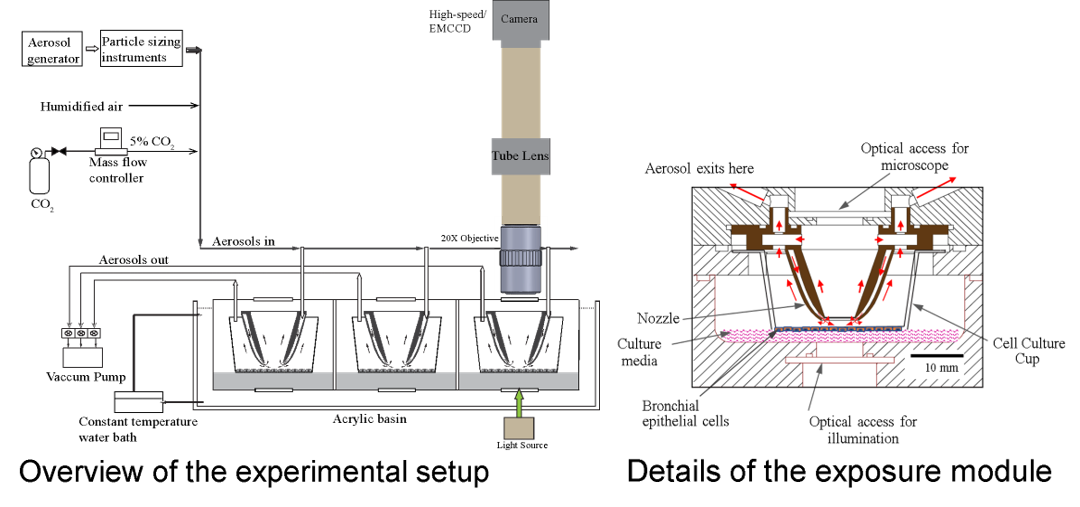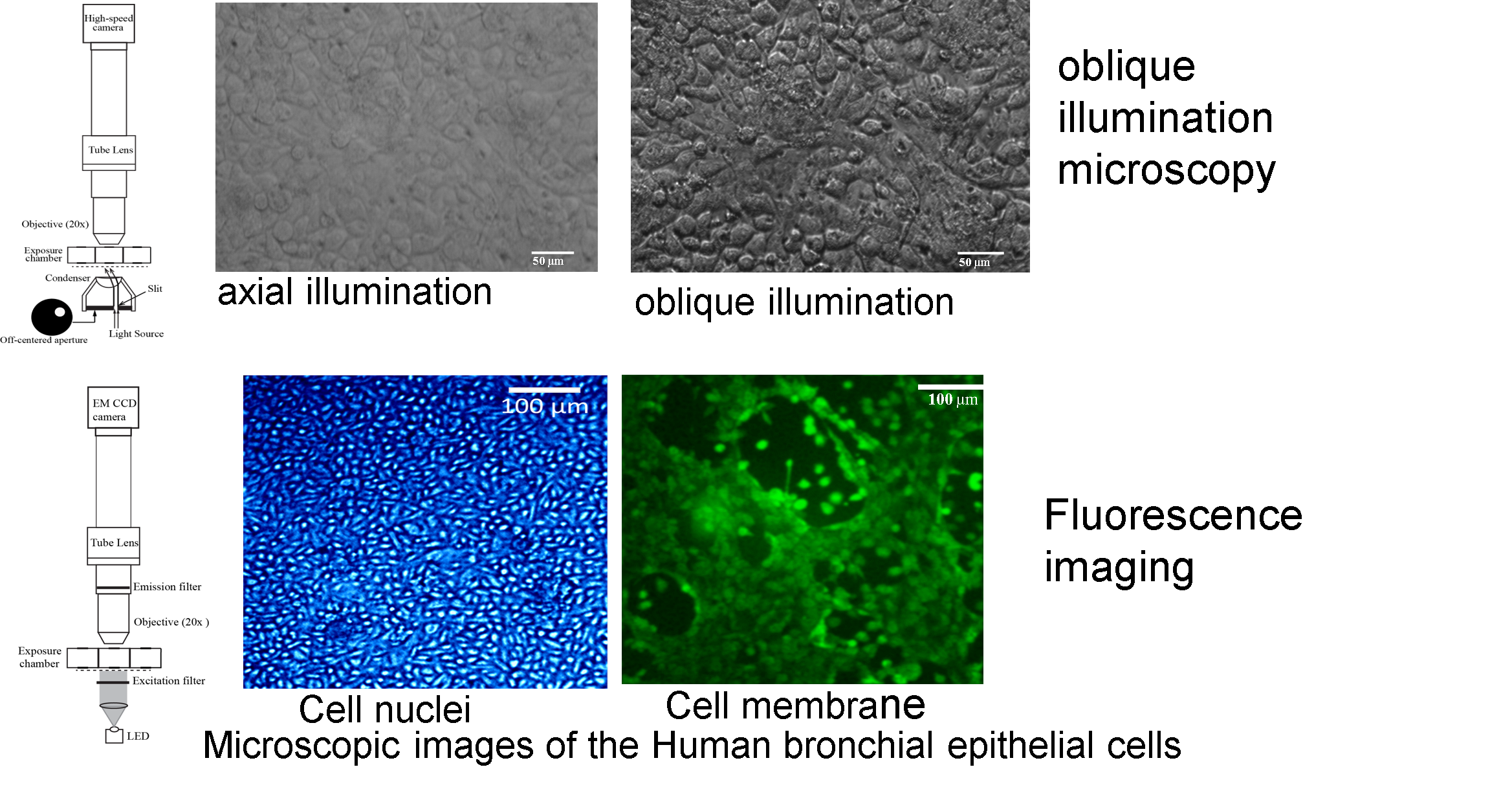People
| Postdoc | Lakshmana Chandrala |
| Graduate Student | Name |
| Project Supervisor | Prof. Joseph Katz |
| Design & Technical Support | Dr. Yury Ronzhes |
Introduction
Aerosolization of oil by wave splashing on crude oil slicks may pose a respiratory health threat to oil-spill workers and communities nearby. However, the health effects of inhaling oily aerosols remain mostly unknown. Exposure systems for in vitro testing of bronchial epithelial cells to airborne environmental agents are crucial in understanding the airway disease pathogenesis. Several such systems have been developed and standardized over the years for toxicity testing of airborne particles. However, a significant limitation of these systems is that they do not permit direct observation on the cells during the exposure and the cells have to be removed from the chamber for microscopic observations for, e.g., Ciliary Beat Frequency (CBF) measurements. Hence, despite considerable efforts, little is known about the biological responses of epithelial cells to airborne particles during the exposure.
Objective
The present study introduces an exposure chamber for Real-Time Examination of Cell Exposure (RTECE) that enables in-situ live imaging of cell cultures while being exposed to airborne materials under controlled conditions.
Real-Time Examination of Cell Exposure system
 Features of the system
Features of the system
- In-situ imaging of cells involving different illumination and microscopic observation techniques
- Optimized nozzle for uniform deposition of aerosols on the cell culture surface
- Disposable 3D-printed nozzles to avoid cross-contamination between the experiments.
 Optical Modalities
Optical Modalities
Two optical modalities, oblique illumination microscopy and fluorescence imaging, are employed to visualize the cell culture in situ. Oblique illumination microscopy is used for monitoring the cilia motion and cell migration, and fluorescence microscopy is used for observing fluorescently-stained cells.
 Results
Results
To demonstrate the capability of this system, a confluent monolayer of Normal Human Bronchial Epithelial (NHBE) cells are subjected to two exposure separated by a rest period of 60 min, each consisting of two cigarettes.
 Sample movie showing the time evolution of cilia during the exposure to cigarette smoke. The video is obtained after the high-pass filtering the time-series of the intensity of each pixel.
Sample movie showing the time evolution of cilia during the exposure to cigarette smoke. The video is obtained after the high-pass filtering the time-series of the intensity of each pixel.
In situ measurement of CBF:
- NHBE cells are subjected to two exposures, each exposure consisting of two cigarettes.
- Using oblique illumination microscopy, the RTECE is used for in situ measurements of the time evolution of CBF.
 In situ measurement of Cell migration:
In situ measurement of Cell migration:
- Using Particle image velocimetry, the cell motions are monitored for twelve hours.
Exposure to smoke increases the spatially-averaged cell velocity by an order of magnitude
 Publications
Publications
Chandrala, L. D., Afshar-Mohajer, N., Nishida, K., Ronzhes, Y., Sidhaye, V. K., Koehler, K., & Katz, J. (2019). A Device for measuring the in-situ response of Human Bronchial Epithelial Cells to airborne environmental agents. Scientific reports, 9(1), 1-12.

